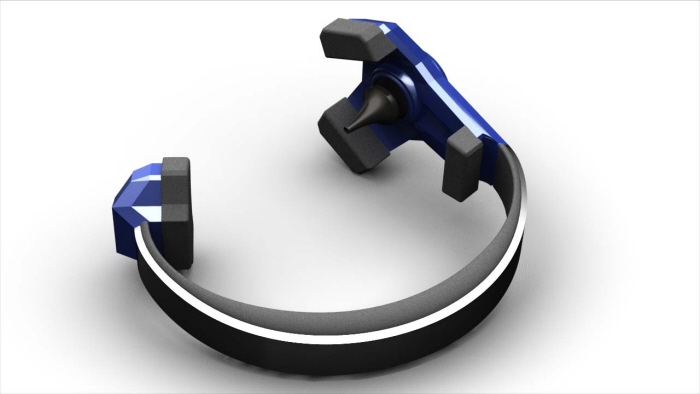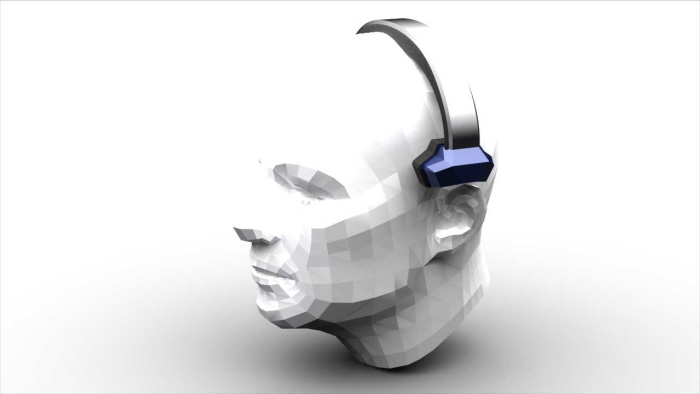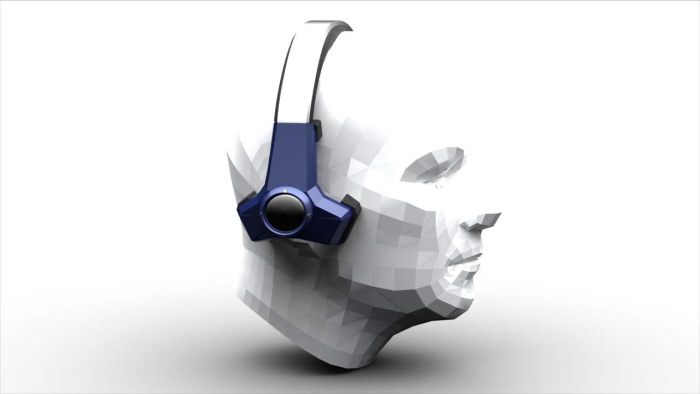
Connect is a personalized management device that collects, records and organizes data into easily interpreted visual outputs. Based on a variety of parameters, individual results are placed into sections to be easily interpreted at a later time. Embedding information within individual tests such as a photo of a meal eaten and insulin amounts taken allows the user to review blood sugar trends at their own convenience.

Connect is a personalized management device that collects, records and organizes data into easily interpreted visual outputs. Based on a variety of parameters, individual results are placed into sections to be easily interpreted at a later time. Embedding information within individual tests such as a photo of a meal eaten and insulin amounts taken allows the user to review blood sugar trends at their own convenience.

Otoscope re-design - New otoscope design, intended to show med students or patients what is happening inside of the ear (Teaching tool). Collaborative effort with Logan Frentz, Rob Faulkner, Jamie Schmitt, and Dr. Bill Hodgetts.

Otoscope re-design - New otoscope design, intended to show med students or patients what is happening inside of the ear (Teaching tool). Collaborative effort with Logan Frentz, Rob Faulkner, Jamie Schmitt, and Dr. Bill Hodgetts.

Otoscope re-design - New otoscope design, intended to show med students or patients what is happening inside of the ear (Teaching tool). Collaborative effort with Logan Frentz, Rob Faulkner, Jamie Schmitt, and Dr. Bill Hodgetts.

Otoscope re-design - New otoscope design, intended to show med students or patients what is happening inside of the ear (Teaching tool). Collaborative effort with Logan Frentz, Rob Faulkner, Jamie Schmitt, and Dr. Bill Hodgetts.

Otoscope re-design - New otoscope design, intended to show med students or patients what is happening inside of the ear (Teaching tool). Collaborative effort with Logan Frentz, Rob Faulkner, Jamie Schmitt, and Dr. Bill Hodgetts.

Otoscope re-design - New otoscope design, intended to show med students or patients what is happening inside of the ear (Teaching tool). Collaborative effort with Logan Frentz, Rob Faulkner, Jamie Schmitt, and Dr. Bill Hodgetts.

Otoscope re-design - New otoscope design, intended to show med students or patients what is happening inside of the ear (Teaching tool). Collaborative effort with Logan Frentz, Rob Faulkner, Jamie Schmitt, and Dr. Bill Hodgetts.

The goal of this project was to design a glucose monitor that would better integrate into one's lifestyle, and not be a hindrance to daily activities. The re-design is an all-in one device that eliminates the need to carry a lance, test strips, and other items needed to test blood glucose levels. The cell phone-like appearance helps the device better camouflage into daily routine.

Design for dialysis - Dialysis patients are confined to a bed or chair, with one arm fully occupied. The tray system shown above aims to make long periods of hospital stay a more stimulating experience, by making enjoyable activities like reading, drawing, and board games more accessible. Accommodating features such as tilt, height, and interchangeable modules, allows the user to enjoy a range of activities that were previously difficult to accomplish.

Design for dialysis - Dialysis patients are confined to a bed or chair, with one arm fully occupied.
The tray system shown above aims to make long periods of hospital stay a more stimulating experience, by making enjoyable activities like reading, drawing, and board games more accessible.
Accommodating features such as tilt, height, and interchangeable modules, allows the user to enjoy a range of activities that were previously difficult to accomplish.

Design for dialysis - Dialysis patients are confined to a bed or chair, with one arm fully occupied.
The tray system shown above aims to make long periods of hospital stay a more stimulating experience, by making enjoyable activities like reading, drawing, and board games more accessible.
Accommodating features such as tilt, height, and interchangeable modules, allows the user to enjoy a range of activities that were previously difficult to accomplish.

Design for dialysis - Dialysis patients are confined to a bed or chair, with one arm fully occupied.
The tray system shown above aims to make long periods of hospital stay a more stimulating experience, by making enjoyable activities like reading, drawing, and board games more accessible.
Accommodating features such as tilt, height, and interchangeable modules, allows the user to enjoy a range of activities that were previously difficult to accomplish.

Design for dialysis - Dialysis patients are confined to a bed or chair, with one arm fully occupied.
The tray system shown above aims to make long periods of hospital stay a more stimulating experience, by making enjoyable activities like reading, drawing, and board games more accessible.
Accommodating features such as tilt, height, and interchangeable modules, allows the user to enjoy a range of activities that were previously difficult to accomplish.

Design for dialysis - Dialysis patients are confined to a bed or chair, with one arm fully occupied.
The tray system shown above aims to make long periods of hospital stay a more stimulating experience, by making enjoyable activities like reading, drawing, and board games more accessible.
Accommodating features such as tilt, height, and interchangeable modules, allows the user to enjoy a range of activities that were previously difficult to accomplish.

Paranordic Sit Ski - Teamed up with a group of engineers, we created a sit ski that is unparalleled in the paranordic market. The ski is adjustable in both seat height and tilt, to accommodate the widest range of users, with various injury levels. The sit ski is compatible with existing bindings, giving the user options to customize their set-up.

Paranordic Sit Ski
gLike




















